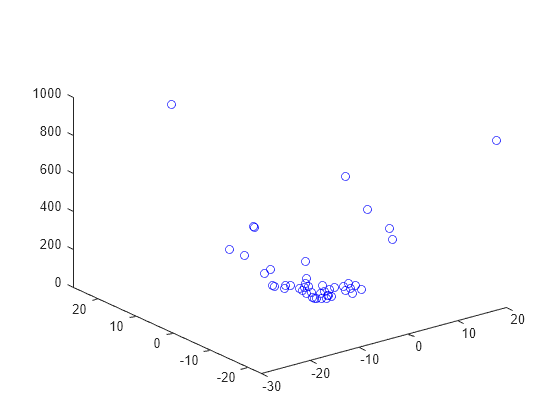Find Multiple Local Solutions Using MultiStart or GlobalSearch, Problem-Based
In solutions to problems that use the MultiStart or GlobalSearch function with the problem-based approach, the output structure contains a field named local that has information about the local solutions. For example, find the local solutions to the rastriginsfcn function of two variables, which is available when you run this example, by using MultiStart.
x = optimvar("x",LowerBound=-50,UpperBound=50); y = optimvar("y",LowerBound=-50,UpperBound=50); fun = rastriginsfcn([x,y]); prob = optimproblem(Objective=fun); ms = MultiStart; x0.x = -30; x0.y = 20; rng default % For reproducibility [sol,fval,exitflag,output] = solve(prob,x0,ms,MinNumStartPoints=50);
Solving problem using MultiStart. MultiStart completed the runs from all start points. All 50 local solver runs converged with a positive local solver exitflag.
disp(sol)
x: 6.8842e-10
y: 1.0077e-09
disp(fval)
0
How many local solutions does MultiStart find?
multisols = output.local.sol; N = numel(multisols)
N = 46
Plot the values.
plot3(multisols.x,multisols.y,multisols.Objective,'bo')
MultiStart starts from 50 initial points, but finds only 46 solutions. MultiStart reports that all runs converged. Therefore, some solutions have multiple initial points leading to those solutions. Find the x0 values that list multiple initial points.
myx0 = output.local.x0; sx = zeros(size(myx0)); for i = 1:length(sx) sx(i) = numel(myx0{i}); end mults = find(sx >= 2)
mults = 1×4
13 17 25 36
Determine whether fmincon, starting from two initial points in mults(1), ends at the same solution.
pts = myx0(mults(1));
r = pts{1}.x;
t01.x = r(1);
s = pts{1}.y;
t01.y = s(1);
disp(t01) x: -30
y: 20
opts = optimoptions("fmincon",Display="none"); sol1 = solve(prob,t01,Options=opts)
sol1 = struct with fields:
x: -1.9899
y: -2.9849
t02.x = r(2); t02.y = s(2); disp(t02)
x: 34.9129
y: -24.5718
sol2 = solve(prob,t02,Options=opts)
sol2 = struct with fields:
x: -1.9899
y: -2.9849
Even though the starting points t01 and t02 are far apart, the solutions sol1 and sol2 are identical to display precision.
See Also
MultiStart | solve | GlobalSearch